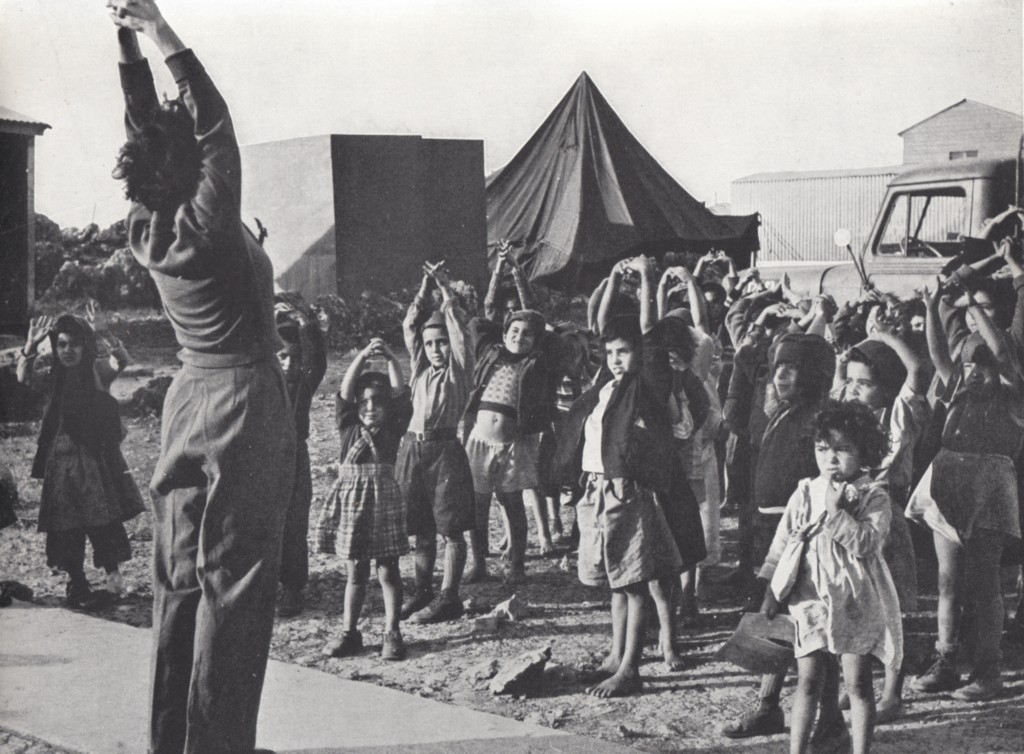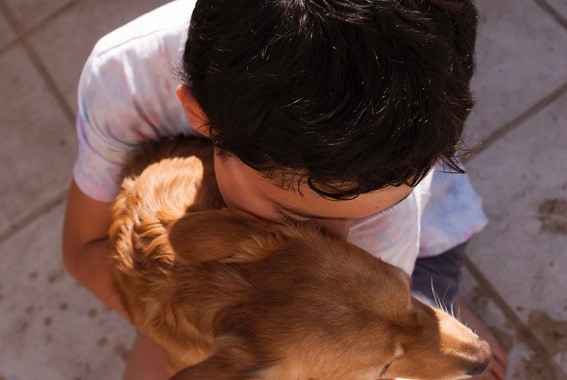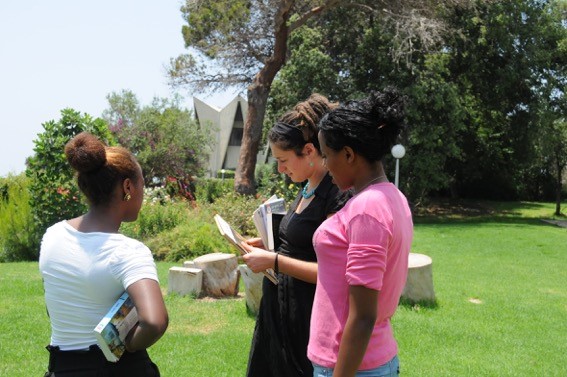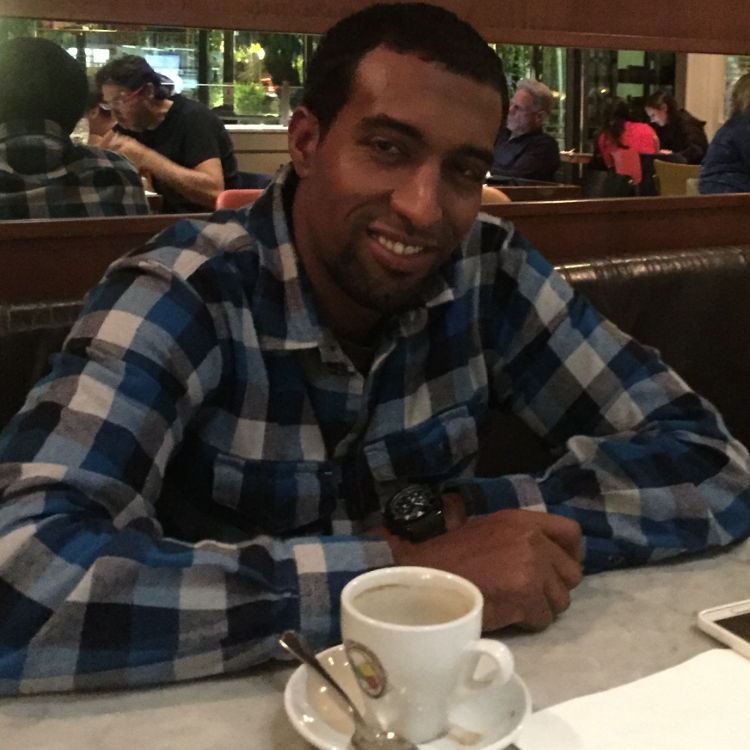Israeli child welfare policies are built on a model that the rest of the world should examine closely.
Yoav is a nine-year-old boy with big brown eyes, olive skin, deep dimples, and a confident swagger. He lives in a split-level home on a residential street that curves along a mountain ridge in a prosperous Israeli town. He attends the neighborhood public school, an attractive complex with eco-friendly playground equipment, ample basketball courts, and colorful classrooms. Yoav wears clothes and gym shoes on a par with the other kids. Nothing seems to set him apart from other children. His favorite subject is math. He plays soccer and studies dog training as after-school activities. He loves playing cards and video games and jumping on the trampoline in his backyard.
But Yoav (not his real name) is one of 350,000 children in Israel who are considered to be “at risk.” Though the definition is broad, “at risk” generally refers to children whose families live at or below the poverty line. In Israel, children at risk account for about 16 percent of the under-18 Jewish population, a percentage consistent with much of the Western world.
“In Israel, as in other countries, there is a big correlation between being disadvantaged and being poor, and it expresses itself in poor scholastic achievement and high drop-out rates,” says Chaim Adler, emeritus professor of education at Hebrew University and winner of the Israel Prize for pioneering research on the sociology of education.
Of those 350,000 Israeli children, Yoav is one of 10,000 who receive out-of-home services under the auspices of the Ministry of Welfare. That is, he does not live at home with his family. On Tuesdays, his mother, Elisheva, comes to visit; and every other Shabbat, he goes home with her to Jerusalem. But then Yoav returns to a mishpachton, a family group home with 11 children ranging in age from eight to 18.
In Israel, like everywhere else, the decision to take a child out of the home is fraught with risks. “We’re always criticized,” says Dalia Lev-Sadeh, head of Services for Children and Youth at the Ministry of Welfare and Social Affairs. “If we take kids out of the home, we’re kidnapping. If we don’t take them out, we’re afraid of the parents.”
Yoav, however, is one of the few for whom the decision was voluntary. His mother wanted it. Elisheva, an artist and single parent, was overwhelmed by her son’s behavioral and educational problems. In school, Yoav was hard to control and frequently suspended. New schools were tried, unsuccessfully. Ritalin was not an option she was willing to consider. As a result, at age seven-and-a-half Yoav couldn’t read and was a chronic truant. His budding skillset, however, was evident. He could hawk used toys and household items on the street, negotiate deals, and do math well enough to make change. He could rappel down a mountain and fashion bows and arrows that actually worked. The Ministry of Welfare and Social Services did not see Yoav as a lost cause. Instead, they recognized a need.
About a year and a half ago, Yoav moved into a mishpachton run by Orr Shalom, a non-profit agency serving 1,400 children who have been removed from their families by the Welfare Ministry. The majority of Orr Shalom’s kids live in foster homes, but about 300 live in 27 mishpachtonim scattered around the country.
The mishpachton is an unusual model for residential care, one that doesn’t exist in the United States. Headed by a married couple who act as housemother and housefather, a mishpachton is staffed by a social worker who stays in close contact with the biological parents; a psychologist who ensures that the various therapies—art, music, pet, group, etc.—are made available as needed; a teacher who makes sure each child is prepared for school; three “big sisters,” post-high-school girls performing national service; and a cook. They are all under the direction of a home manager, who also manages two other nearby mishpachtonim.
The team holds a meeting each week devoted to each child, focusing on behavior, health, schoolwork, extracurricular activities, issues with biological parents, and more. If a holiday is coming up, like Sukkot, when Israeli kids traditionally receive gifts from parents, team discussions will touch on gift ideas. If a birthday is coming up—kids get to invite their friends from school—they discuss gifts and party details.
The mishpachton model stands out because of the way it blurs the meaning of “family.” The house parents serve as parental figures for the kids, but the kids are kept aware of the fact that the house parents are not their parents. To emphasize this, the kids call the house parents by their first names.
“We give parental care, but we don’t replace parents,” says Stacey Yehoshua, Orr Shalom’s chief psychologist. “The more the biological parent can be a partner with us, the more effective our work with the child can be.”
Besides taking Yoav home every other Shabbat and most holidays, Elisheva spends time with him once a week after school and meets with the social worker whenever she’s asked to do so. For Elisheva, this is exactly what she longed for: A residential school to relieve her of day-to-day demands with which she was unable to cope, without jeopardizing her legal custody of Yoav or diminishing her unique role in his life.
The mishpachton is an “in-between” model, combining elements of foster care and normal family life. It’s also an expensive model, which is perhaps one of the reasons it has not been copied in the U.S. “Even paying privately, it would be hard to find all these resources coming together in the States,” says Professor Tamar Heller, head of the Department of Disabilities at the University of Illinois at Chicago and a leading expert in residential programs for adults and children with special needs. “In Illinois, children like these from low-income families in particular would likely become wards of the state.”
Another reason is that the U.S., for both philosophical and economic reasons, tends toward seeking solutions that are more permanent. If Elisheva lived in the States, says Margaret Vimont, COO of Chicago’s Jewish Child & Family Services, “she would be pushed to fix the situation and get her child back. Or she would lose custody and hopefully continue to have a role while he is raised by an adoptive family.”
Israel’s focus on children at risk began about 100 years ago when anti-Semitism in Eastern Europe, emergent Jewish nationalism, and socialist fervor led the first Zionist pioneers to make aliyah to Palestine in order to develop an agricultural economy and build a just society. Services for children were soon needed and depended entirely on volunteerism.
The first youth village that served as both a home and an agricultural boarding school for kids in need was established in central Palestine in 1927. Founder Siegfried Lehmann, a Berlin-born doctor, immigrated to Palestine after creating a shelter for Jewish orphans in Lithuania after World War I. Today, the Ben Shemen Youth Village continues to provide a home and schooling for some 1,000 children and teens at risk. Among its alumni are entertainment mogul Haim Saban and former Israeli president Shimon Peres.
In the early 1930s, Hadassah founder Henrietta Szold took on the challenge of getting Jewish children out of Germany. Aided by Recha Freier, who founded Youth Aliyah on the day Hitler took power in 1933, Szold arranged for thousands of children fleeing the Nazis to be resettled in residential schools located in bucolic settings. These youth villages became the gold standard in residential services for children at risk. So great was Szold’s impact that Israel established the day she died, the 30th day of the month of Shevat, as its Mother’s Day.
By the end of World War II, youth villages under the auspices of the Jewish Agency had been set up to accommodate waves of orphans. When Israel was established in 1948 and mass immigration launched the same day, newcomers included Holocaust survivors who hadn’t gone to school for four or five years. There were also waves of Jews from Middle Eastern countries where education was not universal, families were big, and parents ill-equipped to provide for their children in an industrial economy. Youth villages, now run by the Ministry of Education, were viewed as the best option for providing education, therapy, and ultimately absorbing children into the larger society.

Immigrant children do exercises with their teacher in an Israeli refugee camp, c. 1951. Photo: Pikiwiki / Wikimedia
As an immigrant nation, Israel placed a high priority from the start on caring for newcomers. With its underlying ideology of the ingathering of exiles, Israel believed that it had an obligation to invest in the new arrivals. “When Israel was created,” says Adler, “we already had an impressive network of residential schools, some of which had been the highest-achieving schools in Palestine.” According to Leah Golan, who served as Deputy Director General for Programs at the Jewish Agency before taking over the helm of Orr Shalom in 2013, “This was viewed as the way to help mold the new Israeli, the new sabra.”
If Israel was built by successive waves of at-risk newcomers, it was Americans who updated the model of how to assimilate them. In the United States, parents of children with disabilities, appalled at the horrors they saw in the large institutions that were supposed to care for them, began to form advocacy groups. In the 1970s, they became increasingly vocal, resulting in a move toward community-integrated, home-like settings for care.
In the early ‘80s, Hal and Shelly Cohen, two American social workers who made aliyah, brought this new model to Israel. Teaming up with Gottfried Mueller, a German philanthropist passionate about helping abused children, the Cohens convinced Israel’s Welfare Ministry that what kids from troubled backgrounds needed were not sprawling rural campuses with hundreds of kids supervised by young, enthusiastic counselors. Rather, they needed intimate settings with parental role models and a semblance of normal family life. This led to the creation of Orr Shalom. Within 10 years, the organization’s mishpachtonim had spread all over the country.
Today, some 110 agencies provide about 180 forms of service for Israel’s at-risk children. Where a child is placed and how they are sponsored depends on the complex relationship between the Ministries of Welfare and Education.
Children at risk who are under 14 generally enter the system through the Welfare Ministry. In this case, the tilt is toward community-based services. The service options, in descending order of preference, are continued in-home placement with community-based supports, foster care, and only then residential treatment centers like the mishpachtonim.
Orr Shalom receives state funds to support children up to age 18. But this is not enough, its director says. The kids themselves have asked for more help. “If a child at 17 understands that in one year he’s on his own, it’s terrifying,” Golan explained. As a result, Orr Shalom raised funds from the Jewish Federation of Philadelphia three years ago that enabled the mishpachton to provide parent-like support for its kids through their army service and beyond. This includes helping them get into the right army units and making sure they receive every entitlement for which they are eligible. Thanks to these funds, which will extend the agency’s involvement with its youthful charges through age 25, Orr Shalom can now help its kids find the right college and career training.
Lev-Sadeh of the Welfare Ministry believes that support for children over 18 will continue to grow, saying, “I’m sure we’ll find ways. When you invest in them, you build the future of the country.”
Israel has a long history of helping at risk children, often out of dire necessity. Chaim Peri personifies this history in microcosm. His mother fled Europe as a mentally ill teenager and gave birth as a single mother in pre-state Palestine. Now in his 70s, Peri remembers chasing her through the streets of Tel Aviv to bring her home. As a child, he lived in orphanages.
Peri eventually earned a doctorate in education at the University of London and devoted himself to making life better for kids who have endured “a chaotic background” like his own. For 30 years, he served as director of the Yemin Orde Youth Village south of Haifa. Founded in 1953 by Jews from England, Yemin Orde was built to provide a safe haven for Jewish children and promote Jewish identity and a connection to Israel. Today, it is home to more than 400 teens from Ethiopia, Russia, France, and other countries, as well as native-born Israelis. About 80 come from troubled communities in France where their parents still reside, fearful of anti-Semitism.
Recently retired, Peri has been the recipient of many awards for his work with troubled children, including the 2014 World of Children Alumni Award, a global honor often cited as the Nobel Prize for children’s advocates. A picture of Henrietta Szold hangs prominently on his office wall.
Peri created a rehabilitative model known as the Village Way, based on the work of Yale scholar Aaron Antonovsky and inspired by the ethos Peri witnessed in Ethiopian villages. “They had no electricity or running water,” he said, “but they were rich in dignity and in respect for traditions and for the elderly, and that cohesiveness permeated everything.”
The essence of Village Way philosophy, explained Peri, is an inversion of carpe diem: Rather than the child “seizing the day,” the day, deliberately ordered, seizes the child. The aim is to create a “saturated environment” that leaves an indelible imprint, filling time and space and everything around the child with a cohesive message and way of living.
The Village Way is a platform that any group—Jews, Arabs, Druze, religious, secular—can adapt to its own beliefs. As a result, it has been replicated in Africa, America, and throughout Israel.
At Yemin Orde, everyone who has contact with the kids, from the Village head to the gatekeepers to the cooks and janitors, and, of course, the teachers, becomes a Village Way educator. “Deep inside, the kids want to see strong, stable people around them,” Peri said. “So they’re always testing us.” If the “educators” understand this and stand up to the kids in the right way, “miracles can happen.”
Much of this work is done through Judaism—as Peri explained, “I don’t care how you perform your liturgy or religious service, kids cannot be godless.” Accordingly, weekly “Torahpy” sessions take up the themes of the weekly Torah portion, which is used to encourage each teen’s personal quest for tikkun—“repair.” Sex education, for instance, begins with the portion Teruma, which focuses on the creation of the male and female cherubs over the Ark of the Covenant. The topic for the whole week is the holiness of the relationship between male and female.
To “de-institutionalize the institution,” Yemin Orde’s school is set away from the residential village. The goal is to create two different cultures, so that kids know that school is school—with grades and performance requirements—but when they come home and want to talk to someone about a teacher they can’t stand, “They won’t be ratted out.”
Most of the kids at Yemin Orde feel they’ve been abandoned at some point in their lives. Because of this, the institution does not expel its charges. This has led to the criticism that the kids can get away with anything because they know they can’t be kicked out.
Though staff cannot replace abusive or neglectful parents, Peri explained, “We can create trustworthy representations of what parental wholeness is all about.” They also create representations of the “greatness” of the kids’ cultures, even if their parents did not. One of the ways they do this is by having “talking table programs” at lunch or dinner, where a successful adult from a distressed background—such as a scientist or an army officer—talks about how he or she succeeded in life. All the kids know Peri’s personal story as well.
Kids come to the Village as teenagers, so the window of opportunity to impact their lives is limited, officially, to 18. But like Orr Shalom, the timeframe is widening. Yemin Orde has facilities where kids who have taken their matriculation exams can stay until they decide to move out on their own. One kid out of 20 takes advantage of the offer and stays longer. “For the rest,” Peri says, “they thrive outside because they know we’re here for them.”
Dana moved into an Orr Shalom mishpachton in Mevaseret Zion, outside Jerusalem, when she was six years old. She is now 27, and manages an Orr Shalom resale shop to earn money while she finishes her bachelor’s degree in education and human resources. With two years of army service as an education officer behind her, she’s planning to earn a master’s degree. She met an army major online and married him a few years ago.
Dana’s mother, whose parents emigrated from Libya, is a single mother with eight children. There were drugs and violence in the home, said Dana, and no affection, encouragement, bedtime stories, or birthday parties.
Despite grim memories, Dana loves her mother, but “from a distance.” Going home is tense, because she sees a way of life that is “just to smoke a cigarette, have a cup of coffee, and not go to work.” When Dana goes home, it’s for the sake of her siblings. For birthdays, even her own, she brings the cake, so that there will be one.
At Orr Shalom, Dana said, she learned that families have schedules and children have regular rest times and a hot meal every day. She also learned about boundaries, which she plans to impart to her own children someday.
Her goal is to pursue a career that benefits children. Every child has the potential to give back to society, she said, and the opposite of that potential is to become a drug addict or a drain on society.
Dana knows that the trend in Israel is toward greater emphasis on community-based services that enable children at risk to live at home with their families. Programs like Mo’adonit, for instance, offer after-school activities, lunch, and even dinner. But Dana is grateful that she was able to live away from home in order to avoid facing the same harsh reality, even for an hour, every night.
Dana credits Orr Shalom for inspiring her to succeed. “Orr Shalom saved my life,” she said.
Another success story is Mekonet. He was eight years old when his family made aliyah from Ethiopia during Operation Solomon, a covert rescue action conducted by the Israeli Air Force in 1991.
Taught to be a shepherd and navigate the terrain in his native country, Mekonet had no other schooling when he arrived in Israel. His parents settled in a rough area of Ashkelon stricken with poverty, drugs, and crime. He grew up one of 10 children. His name was changed to Benny. He learned how to read. At 15, he didn’t like what he saw around him. Having heard about Yemin Orde, he told his parents that he wanted to go to boarding school. His parents were against it at first, but they let him go.
The mix of teens he encountered at Yemin Orde showed him that kids from all backgrounds face severe challenges, and made him ask deep questions about his own roots. Eventually he found strength in his identity. In the army, he became a lieutenant and, soon after, took back his Amharic name. He later finished an M.A. at the University of Haifa in natural resources and environmental science and got a job for the municipality of Bnai Brak.
“The people who pay the price are the adults,” said Mekonet, who came to view his parents’ struggle to bring their family to Israel as a heroic sacrifice. “It’s too late for them to catch up.” This leads to a role reversal: The normal thing, said Mekonet, is for parents to take care of their children. For him, it’s different. “For me, I have to take care of my parents. At Yemin Orde, I realized that this could be my strength. You have to take care of your future and your family, so you have to be strong.”
When he goes home, he sees his parents and siblings and others who are still struggling. He knows he is a role model.
“If everyone is the same, the younger ones say, there’s no hope. But they can look at me and say, ‘Why not me?’”
![]()
Banner Photo: Orr Shalom








